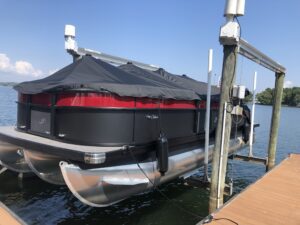Whether you already have a dock or are considering building one, this post will cover all essential aspects, including what to look out for, determining if you’re a good candidate for a dock, upkeep, and potential costs.
Assessing Your Dock’s Condition: Before diving into maintenance tips, take a critical look at your existing dock. Look out for signs of wear and tear, such as rotting wood, loose boards, or rusted metal components. Check for stability issues, especially if you notice significant movement or a sinking platform. Identifying these issues early on can help prevent further damage and keep repair costs in check.
Dock Repair: DIY or Professional Help?: If your dock requires repair, consider whether it’s a project you can handle yourself or if it necessitates professional assistance. Simple tasks like replacing loose boards or tightening screws can be managed by homeowners with basic DIY skills. However, more complex repairs, such as structural issues or electrical problems, are best left to experienced dock builders or contractors to ensure safety and long-lasting results.
Understanding Your Candidacy for a Dock: If you’re contemplating building a dock, several factors determine your candidacy. First, check with local authorities and zoning regulations to ensure you’re permitted to build a dock on your waterfront property. Consider the water depth and shoreline conditions; these play a crucial role in determining the size and type of dock suitable for your location. Additionally, assess your intended use of the dock, whether it’s for recreational activities, boat docking, or simply enjoying the water views.
Regular Maintenance for Longevity: Regular maintenance is the key to extending the lifespan of your dock. Inspect your dock at the beginning and end of each boating season, looking for any damage caused by harsh weather conditions, water exposure, or marine organisms. Clean the dock regularly to prevent algae growth and reduce slippery surfaces. Apply water-resistant sealants to protect wooden components from moisture, and check and replace any damaged or worn hardware.
Upkeep: Protecting Your Investment: In addition to routine inspections and cleaning, invest in preventive measures to protect your dock. Consider installing bumpers or fenders to prevent damage from boat collisions. Add a weatherproof cover to protect your dock during the off-season or when not in use for an extended period. Implementing these measures can significantly reduce maintenance and repair costs in the long run.
If you’re at the lakefront, a waterfront dock is a smart investment to your property. If you’re considering building a dock, make informed decisions about design, materials, and budgeting to ensure your dock aligns perfectly with your vision and needs and call TGA to help you do all this seamlessly.
Wishing you many unforgettable moments by the water!


